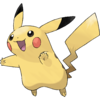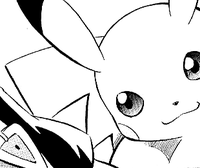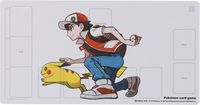Red's Pikachu: Difference between revisions
Driftin Soul (talk | contribs) m (→Pokémon Yellow: Consistency with the rest of the article) |
|||
| Line 23: | Line 23: | ||
====Pokémon Yellow==== | ====Pokémon Yellow==== | ||
[[File:Red Pikachu Yellow debut.png|thumb|Pikachu first appearing as a [[wild Pokémon]]]] | [[File:Red Pikachu Yellow debut.png|thumb|Pikachu first appearing as a [[wild Pokémon]]]] | ||
Pikachu first appears along the outskirts of {{rt|1|Kanto}}, where [[Professor Oak]] will encounter and {{pkmn2|caught|catch}} it. The player receives Pikachu after going into [[Professor Oak's Laboratory]] and attempting to take the starter {{p|Eevee}}, which {{ga|Blue}} will take instead. Pikachu replaces all of the other usual starter Pokémon ({{p|Bulbasaur}}, {{p|Charmander}}, and {{p|Squirtle}}), but these three Pokémon can be received during events later in the game (which reflects [[Ash Ketchum]]'s eventually obtaining all three of Kanto's starters in the anime.) After battling against Blue for the first time, the Pikachu will choose to stay out of its {{i|Poké Ball}} and [[walking Pokémon|follow the player]] around unless | Pikachu first appears along the outskirts of {{rt|1|Kanto}}, where [[Professor Oak]] will encounter and {{pkmn2|caught|catch}} it. The player receives Pikachu after going into [[Professor Oak's Laboratory]] and attempting to take the starter {{p|Eevee}}, which {{ga|Blue}} will take instead. Pikachu replaces all of the other usual starter Pokémon ({{p|Bulbasaur}}, {{p|Charmander}}, and {{p|Squirtle}}), but these three Pokémon can be received during events later in the game (which reflects [[Ash Ketchum]]'s eventually obtaining all three of Kanto's starters in the anime.) After battling against Blue for the first time, the Pikachu will choose to stay out of its {{i|Poké Ball}} and [[walking Pokémon|follow the player]] around unless it faints, is [[Pokémon Storage System|put into storage]], or is traded. | ||
In battle, the starter Pikachu arrives from the side of the screen, as opposed to being sent from a [[Poké Ball]]. At the start of the game, Pikachu is kept in its Poké Ball prior to the first battle against Blue, but it is still sent from the side of the screen in this battle. | In battle, the starter Pikachu arrives from the side of the screen, as opposed to being sent from a [[Poké Ball]]. At the start of the game, Pikachu is kept in its Poké Ball prior to the first battle against Blue, but it is still sent from the side of the screen in this battle. | ||
Revision as of 21:52, 24 April 2023
| ||||||||||||||||||
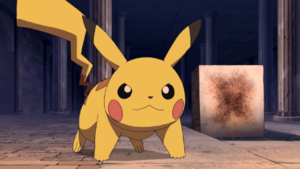 Red's Pikachu in Pokémon Generations | ||||||||||||||||||
| ||||||||||||||||||
| ||||||||||||||||||
| ||||||||||||||||||
Red's Pikachu (Japanese: レッドのピカチュウ Red's Pikachu) is the sole starter Pokémon in Pokémon Yellow for Red; he is based on Ash's Pikachu from the Pokémon anime, which Yellow is loosely based on. Since then, he has appeared as one of Red's signature Pokémon.
In the games
In the core series
Pokémon Yellow

Pikachu first appears along the outskirts of Route 1, where Professor Oak will encounter and catch it. The player receives Pikachu after going into Professor Oak's Laboratory and attempting to take the starter Eevee, which Blue will take instead. Pikachu replaces all of the other usual starter Pokémon (Bulbasaur, Charmander, and Squirtle), but these three Pokémon can be received during events later in the game (which reflects Ash Ketchum's eventually obtaining all three of Kanto's starters in the anime.) After battling against Blue for the first time, the Pikachu will choose to stay out of its Poké Ball and follow the player around unless it faints, is put into storage, or is traded.
In battle, the starter Pikachu arrives from the side of the screen, as opposed to being sent from a Poké Ball. At the start of the game, Pikachu is kept in its Poké Ball prior to the first battle against Blue, but it is still sent from the side of the screen in this battle.
This Pikachu is the only Pikachu found in Yellow; other Pikachu can be traded in from other Generation I and II games. In the Virtual Console release of Pokémon Yellow, the starter Pikachu can participate in the Surf Minigame.
Starting moveset
|
| ||||||||||||||||||
| Pikachu Lv.5 | |||||||||||||||||||
| |||||||||||||||||||
Interactions
Should the player speak to Pikachu, a small animation of his current emotion will pop up; this image can also be an indication of how much the Pikachu likes the player. (This makes Pokémon Yellow the first game to show Pokémon friendship, a mechanic that would become more prominent in Generation II.) Although the player's friendship with Pikachu does not have many uses in the game, it is vital if the player wishes to receive a Bulbasaur in Cerulean City. Besides showing Pikachu's emotions and friendliness, the game also shows animations of several other events:
- If the player has been idle for at least 8 seconds, Pikachu starts randomly turning to look at one of the four directions.
- If the player has been idle for at least 8 seconds and the player and Pikachu are separated by a ledge, Pikachu starts jumping or spinning around.
- If talked to right after the player loses to Blue in the Pokémon Lab, Pikachu will turn its back to the player.
- If talked to right after the player wins against Blue in the Pokémon Lab, it will appear uninterested in the player.
- If Pikachu is affected by a status condition, it will appear weak or in pain. If it is asleep, it will appear asleep when talked to.
- If Pikachu has just learned Thunder or Thunderbolt, it may shock the player if talked to.
- When the player heals their Pokémon at the Pokémon Center, Pikachu jumps over the counter to be healed. Once the healing process ends, Pikachu remains on the counter until the player walks away with it.
- In Pewter City's Pokémon Center, there is a Jigglypuff that will Sing a lullaby if talked to. After listening to the Jigglypuff, Pikachu will fall asleep and not move unless awakened by the player. The center's nurse will also comment on Pikachu's sleeping if talked to, instead of healing the party. The cable club will also be inaccessible. Until the player awakens Pikachu, it cannot be deposited into the PC, have items used on it (excluding the Poké Flute), or moved in the party.
- When the player goes to Bill's house and discovers that he has turned into a Pokémon, Pikachu will approach him and look confused. When Bill reappears in human form, Pikachu will appear to be shocked.
- If the player walks into the Pokémon Fan Club in Vermilion City, Pikachu will approach a Clefairy and fall in love with it.
- If the player uses a fishing rod and then checks Pikachu, it will appear to have a bait bucket over its head.
- If taken inside Pokémon Tower, Pikachu will appear to be scared.
- If talked to right after the player catches a Pokémon, it will make a V with its fingers to represent victory, similarly to how Ash's Pikachu posed after Ash caught Caterpie.
- If talked to after the player loses a battle, Pikachu will appear disappointed in and unsure of its Trainer.
- Reflecting the actions of Ash's Pikachu, this Pikachu will refuse a Thunderstone given to it in Yellow, and, if talked to after the player tries to use the stone, will shake its head in refusal.
- After the player stores Pikachu in Bill's computer, Pikachu complains and becomes less friendly toward the player.
Walking animation
In the game overworld, Pikachu's walking animation is faster if its friendship is equal to or higher than 80.
Cry
The starter Pikachu says its own name, voiced by Ikue Otani, as opposed to the electronic noise uttered by other Pokémon. When the starter Pikachu is in the process of being sent or received in a trade, it utters an electronic noise like other Pokémon, instead of saying its own name. The foe's starter Pikachu in a link battle is treated like a regular Pikachu, so it utters that electronic noise.
Gender
Pikachu has no identified gender in Pokémon Yellow, like all other Pokémon in Generation I games except for Nidoran♀ and Nidoran♂. The starter Pikachu is shown to be male or female, like any other Pikachu, if it is traded to a Generation II game, used in Pokémon Stadium 2, or transferred from a Virtual Console game to the Pokémon Bank via the Poké Transporter.
Held item
If the starter Pikachu from Yellow is traded to Generation II or used in Pokémon Stadium 2, it is initially shown to be holding a Light Ball. The held item of any Pokémon (including Pikachu) may be changed in a Generation II game or by using the PC in Pokémon Stadium 2. The held item data remains even if a Pokémon is saved in a Generation I game (the item is stored where the Pokémon's catch rate would be), even though Generation I games are unable to identify held items.
If a Pokémon in the Virtual Console version of a Generation I or II game is transferred to Pokémon Bank via the Poké Transporter, it won't have a held item. The held item is lost in a Generation I game, or returns to the bag in a Generation II game.
Evolution
The starter Pikachu is unable to evolve in its original game. If the player tries to use a Thunderstone on it, Pikachu will shake its head in refusal and the game text will say "Pikachu is refusing!", but this does not affect their friendship. However, it can evolve into Raichu in another game (including another copy of Pokémon Yellow). There is no way to obtain Raichu in Pokémon Yellow except by either trading one in or using a Thunderstone on an outsider Pikachu. If the starter Pikachu evolves into Raichu, it is treated like any other Pokémon, even if it returns to its original game: it is kept in the Poké Ball and doesn't follow the player, it doesn't have a friendship value, etc.
Releasing
The starter Pikachu is unable to be released in its original game. If the player attempts to release Pikachu, it will complain and the game text will say "Pikachu looks unhappy about it!", but this does not affect their friendship. Pikachu can be traded away and released in another game, or released normally in the Pokémon Stadium series, like any other Pokémon. If Pikachu evolves in another game and returns to its original game as Raichu, it can be released normally as well.
Link battles
In link battles, the foe's starter Pikachu is treated like any other Pikachu, even if both players are playing Pokémon Yellow. When a starter Pikachu is sent for battle, it is shown arriving from the side in its original game, but it is shown coming from a Poké Ball in the foe's game. The starter Pikachu says its own name in its original game, while it utters an electronic noise in the foe's game.
Multiple starter Pikachu
Any Pikachu that the player is the Original Trainer of (according to their Original Trainer name and Trainer ID number) is treated as the player's starter Pikachu. For instance, if a Pokémon Yellow player has the same name and ID as a player of any other Generation I or II game (including another copy of Pokémon Yellow), any Pikachu caught or hatched in the other game is treated as a starter Pikachu in Pokémon Yellow.
If the player has multiple Pikachu which qualify as their starter Pikachu in a single game, a single Pikachu will follow if the first starter Pikachu in the party is not fainted. All starter Pikachu share the same friendship value, so any friendship-modifying event applies to all of them. For instance, if any starter Pikachu levels up or if the player teaches a TM move to any starter Pikachu, the shared friendship value increases; if any starter Pikachu faints or if the player deposits any starter Pikachu in the Pokémon Storage System, the shared friendship value decreases.
Comparison with other Pikachu
Any outsider Pikachu (according to their Original Trainer name and Trainer ID number) behaves like any other regular Pokémon. An outsider Pikachu can be traded from other compatible games. Additionally, sometimes Pikachu were distributed as events, such as the Nintendo Power Pikachu (a Surfing Pikachu that was available from Nintendo Power in 1999).
Outsider Pikachu don't have a friendship value, and they don't follow or interact with the player like the starter Pikachu. In battle, outsider Pikachu are sent from a Poké Ball (as opposed to being sent from the side like the starter Pikachu). The outsider Pikachu don't say their name; their cry is a normal electronic noise like other Pokémon. The outsider Pikachu are able to evolve normally into Raichu, and are able to be released.
Pokémon Stadium series
Using the Transfer Pak, Pokémon Yellow can connect with the games in the Pokémon Stadium series.
In the Japanese Pokémon Stadium, the starter Pikachu is treated like any other Pokémon. When either the English Pokémon Stadium or Pokémon Stadium 2 is connected with Pokémon Yellow, the starter Pikachu has some unique animations and it speaks by saying its own name, voiced by Ikue Otani (unlike the electronic noise cry of the other Pikachu).
- When idle in battle, the starter Pikachu keeps swinging its head to the sides, with its ears slightly uneven.
- This idle animation is seen in the Gallery screen as well. (This screen is used to take snapshots of the player's Pokémon, only in the North American version of Pokémon Stadium.)
- Only in Pokémon Stadium 2, this idle animation is shown when the starter Pikachu is checked in the PC or the trading machine in the Pokémon Lab.
- When entering a battle, the starter Pikachu waves happily to the player. In the Gallery screen, the starter Pikachu waves happily every few seconds.
When a starter Pikachu is in battle, it does not matter whether the player or the computer is using it; in either case, the starter Pikachu still has its unique animations and talks by saying its own name. (The computer is able to use the player's Pokémon in the Free Battle mode of all three Pokémon Stadium games.)
Pokémon Stadium 2 features genders and held items. When Pokémon Yellow (or any other Generation I or Generation II game) is connected to Pokémon Stadium 2, all Pokémon's genders and held items are displayed as usual, despite the fact that genders (except for Nidoran♀ and Nidoran♂) and held items are not featured in the Generation I games. Like any other Pikachu, the starter Pikachu is either male or female. The starter Pikachu initially holds a Light Ball, but the player may take or replace that item by using the PC in the Pokémon Lab.
The starter Pikachu can be released normally like any other Pokémon in any of the three games of the Pokémon Stadium series.
As an opponent
In Pokémon Gold, Silver, and Crystal, Red can be battled in Mt. Silver, with a level 81 Pikachu on his team. At the time, his Pikachu was the highest leveled Pokémon that could be battled in the main series. This Pikachu is likely to have been based on Red's Pikachu from Pokémon Yellow. Although Red doesn't use his Pikachu when battled in Pokémon Stadium 2, he still makes a cameo appearance during the game's end credits, battling Blue's Eevee.
Red's challenge at Mt. Silver returns in Pokémon HeartGold and SoulSilver. He still uses Pikachu in these games; he is now level 88. Again, at the time, Pikachu was the highest level Trainer-owned Pokémon in the series. In the final battle, he is holding a Light Ball, while he knows the four moves used by Ash's Pikachu most often prior to the release of the games, during Pokémon the Series: Diamond and Pearl.
Red can be battled in the Champions Tournament of Pokémon World Tournament in Pokémon Black 2 and White 2. He uses his Pikachu as his signature Pokémon once again in the battle, though it, like all opponent Pokémon in the PWT, varies in gender.
Red can be battled in Pokémon Sun, Moon, Ultra Sun, and Ultra Moon. He uses his Pikachu when battled at the entrance of the Battle Tree. However, Pikachu is not in Red's pool of usable Pokémon inside the Battle Tree proper. He can also be battled in Pokémon: Let's Go, Pikachu! and Let's Go, Eevee!, once again using Pikachu as the leading member of his team.
| Pokémon Gold, Silver, and Crystal | Pokémon HeartGold and SoulSilver | Pokémon Black 2 and White 2 Pokémon World Tournament | ||||||||||||||||||||||||||||||||||||||||||||||||||||||||||||||||||||||||||||||||||||||
|---|---|---|---|---|---|---|---|---|---|---|---|---|---|---|---|---|---|---|---|---|---|---|---|---|---|---|---|---|---|---|---|---|---|---|---|---|---|---|---|---|---|---|---|---|---|---|---|---|---|---|---|---|---|---|---|---|---|---|---|---|---|---|---|---|---|---|---|---|---|---|---|---|---|---|---|---|---|---|---|---|---|---|---|---|---|---|---|---|
|
|
| ||||||||||||||||||||||||||||||||||||||||||||||||||||||||||||||||||||||||||||||||||||||
In spin-off games
Pokémon Masters EX
- Main article: Red (Masters) → Pikachu
Red forms a sync pair with Pikachu in Pokémon Masters EX. It is capable of Gigantamaxing.
Gallery
Artwork
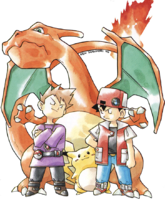
|
File:Red and Pikachu Artwork.png | 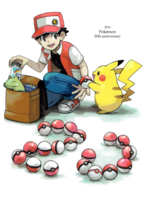
|
| Early artwork with Red, Blue, and Charizard |
Concept artwork for Kotobukiya ArtFx J figurines |
20th Anniversary Artwork from Pokémon Center Online by Emi Ando[2] |

|

|
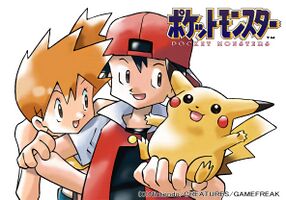
|
| Red and Pikachu concept artwork for Kotobukiya ArtFx J figurines by Ken Sugimori |
Artwork of Silence Bridge by Hitoshi Ariga | Artwork by Ken Sugimori |

| ||
| Raw artwork of the Dream League package art by Naoki Saito |
Sprites

|

|

|

|

|
 
|
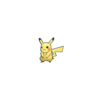
|
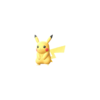
|

|

| ||
| Sprite from Yellow |
Sprite from Gold |
Sprite from Silver |
Sprite from Crystal |
Sprite from HeartGold and SoulSilver |
Sprites from Black 2 and White 2 |
Model from Sun, Moon, Ultra Sun, and Ultra Moon |
Model from Let's Go, Pikachu! and Let's Go, Eevee! |
Menu and overworld sprite from Yellow |
Back sprite from Yellow |
Mood sprite from Yellow | |
In the anime

Pokémon Origins
Red's Pikachu briefly appeared in File 4: Charizard, where Red was seen catching it with a Poké Ball.
Pokémon Generations
Pikachu appeared in The Adventure, where it was encountered and captured by Red in Viridian Forest. It was later seen encountering a Caterpie in the same forest, a group of Wooper in Ecruteak City, a Vigoroth near the Weather Institute, a Probopass and Regigigas outside of the Snowpoint Temple, a Volcarona and Landorus at the Relic Castle, and a Noivern and Zygarde in Terminus Cave.
Personality and characteristics
Initially, Pikachu had a childlike personality, seemingly being curious and inexperienced. However, as time went on, it gained more self-confidence and experience.
Moves used
|
| |||||||||||||||||||||
| A † shows that the move was used recently, unless all moves fit this case or there are fewer than five known moves. | ||||||||||||||||||||||
In the manga
Pocket Monsters HGSS Jō's Big Adventure
Red's Pikachu debuted as a silhouette alongside its Trainer in JBA5. It then physically debuted in JBA6, where it briefly appeared alongside his Trainer as Jō reached the summit of Mt. Silver, ready to challenge Red to a battle.
In the TCG
Red's Pikachu is featured in the Pokémon Trading Card Game. The following is a list of cards featuring Pikachu.
| Pikachu Cards listed with a blue background are only legal to use in the current Expanded format. Cards listed with a green background are legal to use in both the current Standard and Expanded formats. | |||||||
|---|---|---|---|---|---|---|---|
| Card | Type | English Expansion |
Rarity | # | Japanese Expansion |
Rarity | # |
| Red's Pikachu | SM-P Promotional cards | 270/SM-P | |||||
| Pikachu | Cosmic Eclipse | 241/236 | Dream League | 054/049 | |||
| Pikachu |
VMAX Climax | 222/184 | |||||
| Pikachu |
VMAX Climax | 223/184 | |||||
Artwork
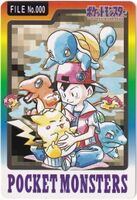
|
| Artwork from the Bandai Carddass card |
Merchandise
Red & Pikachu accessories
The third phase of Pokémon Center 20th Anniversary celebrations began on July 13, 2018, upon which numerous items of Pokémon Center-exclusive merchandise were made for sale. These items all feature Red and his Pikachu in an illustration by Ken Sugimori, specially commissioned as a "thank you" to customers for their continued patronage over the years. Several TCG items were among those available, which included:
Deck case: Each deck case comes with two card dividers featuring the same illustration and capacity to store up to 180 cards.
- Red & Pikachu Deck Case (Japanese: デッキケース レッド&ピカチュウ)
Playmat:
- Red & Pikachu Rubber Playmat (Japanese: ラバープレイマット レッド&ピカチュウ)
Sleeves: Each pack contains 64 card sleeves.
- Red & Pikachu Sleeves (Japanese: デッキシールド レッド&ピカチュウ Deck Shield: Red & Pikachu)
File: Each 4-ring file includes eight 9-pocket sheets for card display and a card divider featuring a negative-color image of Red & Pikachu.
- Red & Pikachu Collection File (Japanese: コレクションファイル レッド&ピカチュウ)
Product images:
|
|
|
|
Trivia

- Red's Pikachu likely inspired, at least partly, the concept of any Pokémon following the player outside their Poké Ball in Pokémon HeartGold and SoulSilver.
- When battling against Red, Pikachu appears to come from inside his Poké Ball, contradicting his dislike of doing so in Pokémon Yellow.
- Although Pikachu initially resides inside of its Poké Ball until the player has battled with the rival for the first time in Pokémon Yellow, it still enters the first battle from outside of the Ball.
- Red's Pikachu is the first starter Pokémon in the main series that will not evolve unless it is sent to another game.
- Red and Pikachu appeared on the cover of the first Pokémon Power magazine.
- At level 88, Pikachu is tied with Cynthia's Garchomp in Pokémon Brilliant Diamond and Shining Pearl for being the highest level Trainer-owned Pokémon outside of a battle facility.
Related articles
For more information on this Pokémon's species, see Pikachu.
Notes
- ↑ As an NPC; may be female when traded or transferred from Generation I or battled in the Pokémon World Tournament.
- ↑ https://youtu.be/P4wtIPuBrYI?t=108

|
This game character article is part of Project CharacterDex, a Bulbapedia project that aims to write comprehensive articles on each character found in the Pokémon games. |
- Pages with broken file links
- Game characters
- Pokémon Origins characters
- Pokémon Generations characters
- Red, Blue and Yellow characters
- Gold, Silver and Crystal characters
- HeartGold and SoulSilver characters
- Black 2 and White 2 characters
- Sun and Moon characters
- Ultra Sun and Ultra Moon characters
- Let's Go, Pikachu! and Let's Go, Eevee! characters
- Stadium 2 characters
- Male characters (Pokémon)
- Pokémon characters
- Oak's Pokémon
- Champions' Pokémon


